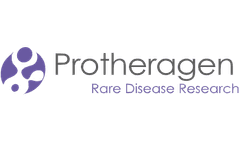Genetic Disease Articles & Analysis: Older
40 articles found
This approach has opened new avenues for immunotherapy, providing hope for treating conditions like cancer, autoimmune disorders, and genetic diseases. Understanding Primary T Cells Primary T cells play a vital role in the body’s defense mechanism. ...
Knockin cell line generation represents a pivotal advancement in genetic engineering, providing vital tools for biological research and therapeutic development. ...
This ease of use has catalyzed numerous studies aimed at understanding gene function and the mechanisms underlying various diseases. Furthermore, it has led to accelerated timelines for preclinical and clinical trials, ultimately benefiting patients awaiting lifesaving therapies. ...
Messenger RNA serves as a crucial link between the genetic instructions stored in your DNA and the functional proteins your cells need to operate. ...
It enables the insertion, deletion, or replacement of specific DNA sequences in the zebrafish genome, proving instrumental for researchers to decode the mysteries of genetic mechanisms. Thus, creating sophisticated models of genetic disorders, studying disease pathogenesis, and testing the efficacy of therapeutic strategies has become ...
Furthermore, the exploration of liposomes for the delivery of nucleic acid-based therapies, such as siRNA and CRISPR/Cas9, offers a new frontier in the treatment of genetic diseases. In addition, there is a growing interest in the use of liposomes as vaccine adjuvants, leveraging their immunostimulatory properties to enhance antigen presentation and elicit robust ...
AI-driven technologies have transformed the way we approach genetic modification and treatment, offering unprecedented opportunities for precision medicine and therapeutic interventions. ...
They are frequently employed in laboratory settings for applications such as the removal of RNA contaminants from DNA samples, thus enhancing the accuracy of genetic analyses. In RNA-sequencing (RNA-seq) protocols, RNases are used to fragment RNA, facilitating the generation of comprehensive RNA profiles for cellular studies. ...
In response to the emerging needs in global healthcare, SOPHiA GENETICS has just revealed the New Generation SOPHiA DDM™ Platform, aiming to stay at the forefront of precision medicine and address today the healthcare needs of tomorrow. ...
It can also be used to study the mechanisms of some diseases, such as cancer, genetic diseases, and infectious diseases.1. Medical ResearchGene knockout is often used in medical research to study human diseases. For example, by knocking out genes associated with diseases, scientists can better ...
The exact cause of breast cancer is not completely understood, but factors such as genetics, hormone situations, and lifestyle choices can increase the threat of developing the disease. ...
AI-driven technologies have transformed the way we approach genetic modification and treatment, offering unprecedented opportunities for precision medicine and therapeutic interventions. ...
This therapeutic gene, once inside the cell, generates a functional protein to correct or counter the effects of the disease-causing genetic mutation, providing a basis for curing several genetic diseases. ...
Imagine tiny bubbles, smaller than a red blood cell, carrying powerful medicines directly to diseased cells. This isn't science fiction, it's the cutting edge of drug delivery with drug-loaded liposomes. ...
It enables the insertion, deletion, or replacement of specific DNA sequences in the zebrafish genome, proving instrumental for researchers to decode the mysteries of genetic mechanisms. Thus, creating sophisticated models of genetic disorders, studying disease pathogenesis, and testing the efficacy of therapeutic strategies has become ...
What are rare diseases? Rare diseases are a diverse group of disorders that affect a small percentage of the population, often occurring as a result of genetic mutations. ...
The resulting modifications can uncover the roles of different genes, simultaneously helping to unravel the complex genetic architecture of various diseases. Currently, sgRNA libraries are frequently utilized for large-scale gene function studies, known as genetic screens. They boast varied applications, from identifying novel drug targets to ...
We will explore bioconjugation strategies for different drugs, including small molecules, peptides, proteins, and peptide RNA along with their potential applications in disease management. Bioconjugation of small molecules: Small molecule drugs can be conjugated to biocompatible polymers or carriers to enhance their pharmacokinetics and bioavailability. ...
Introduction to Genome-wide Association Studies A genome-wide association study is what the National Institutes of Health call "a study of common genetic variation across the whole human genome with the goal of finding genetic links to observable traits."Even though family linkage studies and studies with tens of thousands of gene-based SNPs measure ...
They are used to store human biological samples to aid research into genetics, biomarkers for diseases and personalized medicine. Biodiversity Conservation: Non-human samples such as other animals, plants and bacteria can also be cryopreserved. ...










